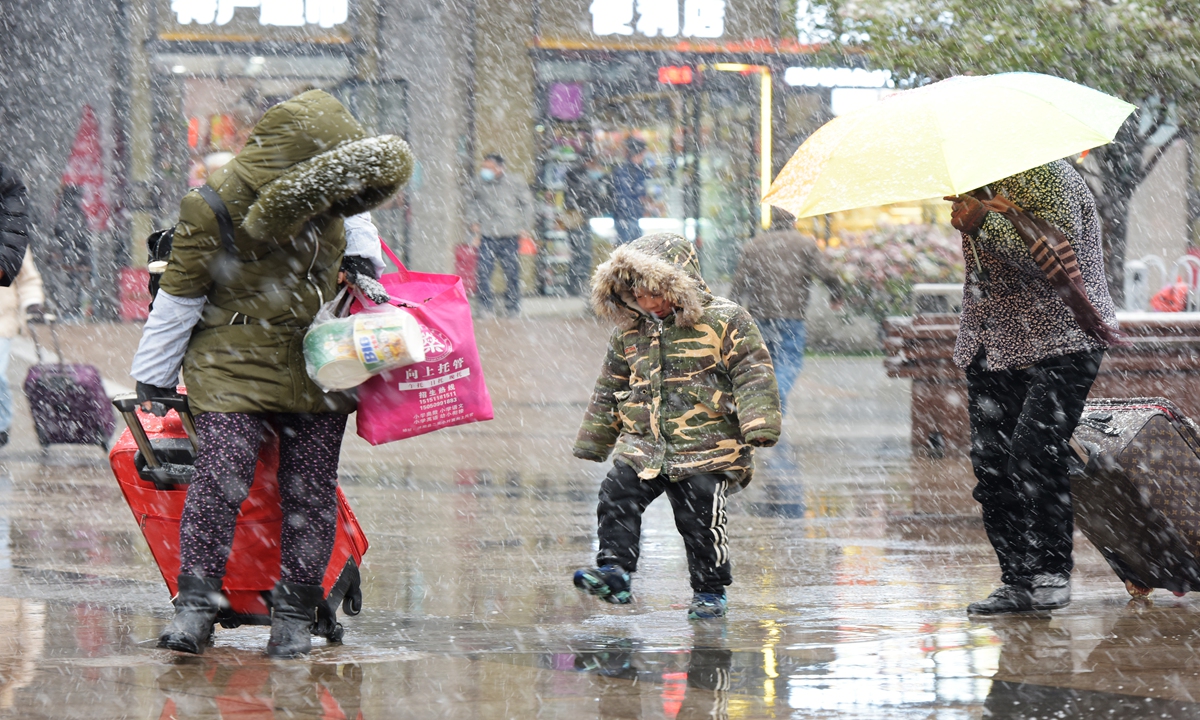Chinese chambers urge members not to come home for Spring Festival to reduce infection risks

Travelers in Xuzhou, East China's Jiangsu Province walk near a train station in heavy snow on Tuesday. China is scheduled to sell train tickets for the 2021 Spring Festival travel rush on Wednesday, and is expected to see 407 million railway passenger trips during the upcoming 40 days. Photo: VCG
As the Spring Festival approaches, people are moving and gathering more frequently, and the situation for prevention and control of the epidemic is becoming more serious. Some business chambers in China are now advising business people to spend the upcoming Chinese New Year abroad instead of coming back home for the holiday in a bid to reduce the risks of infection while traveling.
The Chamber of Commerce in Wenzhou, East China's Zhejiang Province issued an epidemic prevention proposal on Friday to 1.75 million Wenzhou merchants worldwide, suggesting they don't come back home for the Chinese New Year in early February.
"We suggest the celebration of Chinese New Year should be held locally and those who have already returned to Wenzhou should try not to go out and should avoid traveling to areas with a high risk of the epidemic," said the proposal.
The chamber is calling on member enterprises not to hold large-scale gathering activities all over the country.
In addition to the Wenzhou Chamber of Commerce, other chambers have made similar moves.
Local companies are encouraging workers from outside East China's Zhejiang Province to stay in the region for the Spring Festival because of the need to prevent and control the epidemic, a notice from a local chamber of commerce in Ningbo, Zhejiang said, noting that those who choose to stay will get 666 yuan in cash.
More than 2,000 people have received red envelopes so far, and some companies are offering 1,000 yuan to employees, media reports said.
As of 6 am on Friday, 97,314 cases have been reported nationwide, of which 4,375 have been imported from abroad. There were 64 medium-risk areas and one high-risk area in China as of Friday.

